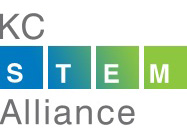18 Mar FIRST Robotics’ co-founder is coming to KC contest with a message about education
Woodie Flowers looks every bit the part of the ’70s guru. He’s got it down, with his silvery ponytail, wispy mustache, easy smile.
If anyone knows how the 58 student teams in Kansas City this weekend should wage their attack in the latest iteration of FIRST Robotics’ 22-year history of often bizarre, always puzzling contests, surely it would be Flowers.
He’s one of the originals here. A co-founder of FIRST. The Pappalardo professor emeritus of mechanical engineering at the Massachusetts Institute of Technology.
Sure, he’s got answers.
But there is no proscribed way to build and run a winning robot that can launch, catch and otherwise survive the weighty impact of airborne exercise balls.
There are 2,700 teams competing in FIRST tournaments throughout the nation this spring. That, Flowers says, will generate roughly 2,700 answers.
Flowers is coming to watch the teams and their robots battling Friday and Saturday at the Metropolitan Community College-Business and Technology campus, and he doesn’t know what he’s going to see.
The robotics contest provides its competitors a rare learning opportunity, he said.
“You get to see the 2,700 roads not taken.”
Flowers and inventor Dean Kamen created FIRST — For Inspiration and Recognition of Science and Technology — in 1989 and held their first event in a high school gymnasium in New Hampshire.
The premise was to design a contest and give competing teams a common set of parts and a limited amount of time to work with mentors and produce their robot. Students would have to collaborate with one another but also with other teams, learning FIRST’s hallmark “gracious professionalism” along the way.
It became clear early on that the game itself was “the most important and unique product FIRST puts out each year,” Flowers said.
It had to spawn teamwork. The solutions it required had to be possible, he said, and possible in many ways.
The outcomes must not divide the high school teams into “those that can do it and those that cannot.”
The games must engage teams that span from the rookie squad working out of a garage to veteran teams with a host of engineering mentors. They also need to be entertaining to spectators as well as the players.
The games have varied wildly over the years. There have been racks, pyramids, octagons and ramps. They’ve thrown, kicked and stacked balls, discs, rings and blocks.
This year’s version, Aerial Assist, lends to several potential roles in competition — shooter, receiver, blocker and goaltender — and broad freedom on how to equip one’s machine for any role.
The students’ creativity sparks. Then they share in the ideas of others when everyone comes together for the games.
“This is the archetype for liberal education in the 21st century,” Flowers said.
Knowing the mechanical pieces, knowing how to write code or how to run a controller — that’s just the beginning, he said.
Real learning comes when students collaborate to create new ways to bring it all together. That’s the kind of education that “sticks,” he said, in whatever world technology leads us to.
“Kids must be able to do things machines can’t do,” Flowers said.




